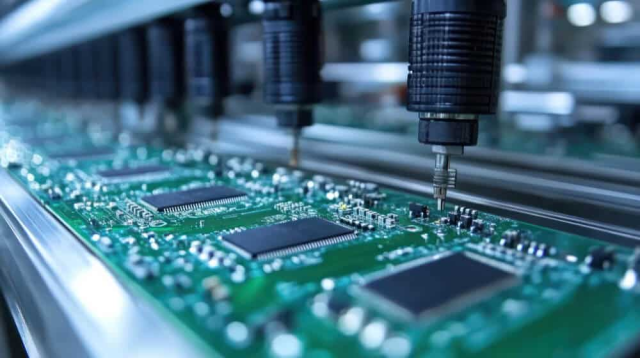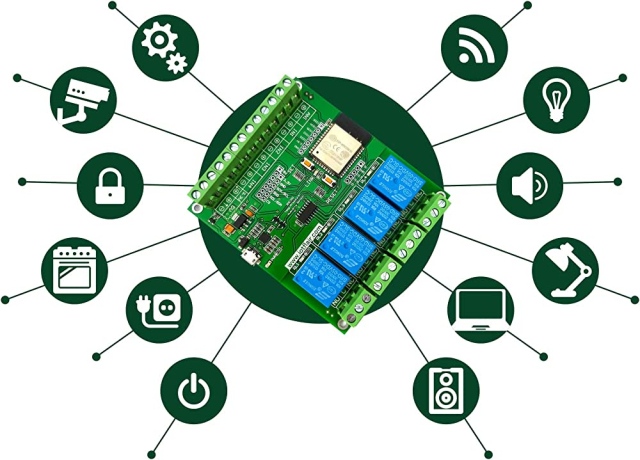Achieving High-Frequency Reliability and Efficient Heat Dissipation Through KKPCB’s Hybrid Lamination Platform
From Material Performance to System-Level Efficiency
In industrial mmWave transceiver modules operating from 28 to 81 GHz, engineers face a dual challenge: maintaining signal integrity across multilayer stackups while managing localized power density and heat accumulation.
Traditional FR-4 or mid-grade PTFE composites often struggle to balance dimensional stability and dielectric uniformity at such high frequencies—resulting in phase drift, impedance mismatch, and uneven RF gain.
Duroid 6002 PCB material, featuring a Dk of 2.94 ± 0.04 and Df of 0.0012 @ 10 GHz, offers exceptional dimensional accuracy and low-loss performance that make it ideal for industrial 5G, mmWave, and backhaul transceiver architectures.
Yet, when combined with high-power amplifier layers, lamination-induced stress and thermal gradients can introduce long-term reliability issues unless carefully engineered.
KKPCB addresses this through its hybrid stackup integration process, optimizing thermal balance and impedance alignment in complex multi-die RF modules.

Key Design Challenges in Duroid 6002 PCB-Based Transceivers
| Reliability Concern | Engineering Root Cause | System-Level Impact |
|---|---|---|
| Layer Misregistration | Differential CTE between Duroid 6002 and FR-4 | Impedance drift, signal reflection |
| Hotspot Formation | Uneven copper density in PA regions | Gain compression, thermal fatigue |
| Via Stress Fatigue | Repeated thermal cycling | Microvia cracking, degraded conductivity |
| Dielectric Skew | Uneven lamination pressure | Phase imbalance, poor beamforming control |
KKPCB’s Hybrid Stackup Engineering Framework
1. CTE-Balanced Material Architecture
-
Duroid 6002 (z-CTE ≈ 24 ppm/°C) paired with high-Tg FR-4 or ceramic prepreg layers.
-
Pre-simulation of mechanical strain using finite element thermal analysis to ensure even expansion.
-
Result: Layer shift < 25 µm across 8-layer PCB after 1000 thermal cycles (–55°C to +150°C).
2. Thermally Conductive Core Reinforcement
-
Incorporation of Cu-Mo-Cu or AlN thermal spreaders beneath PA zones.
-
Thermal resistance reduced by 18–25%, stabilizing power amplifier efficiency during sustained load.
3.Optimized Lamination Process Control
-
Vacuum press at 190°C / 200 psi / 75 min to ensure void-free bonding.
-
Controlled cooling profile (< 2°C/min) minimizing resin shrinkage and warpage < 0.12 mm per 250 mm panel.
4.RF Impedance and Phase Matching
-
Inline VNA (up to 110 GHz) verification and TDR impedance mapping.
-
Typical impedance deviation ±4%, phase error < 1.2° across 60 GHz array boards.

Duroid 6002 PCB
Case Study — Industrial mmWave Transceiver Array Board (60 GHz)
Application: Factory automation radar and industrial IoT backhaul module
Client: EU-based 5G equipment manufacturer
Design Goal: Improve heat dissipation and maintain signal uniformity across 8-layer hybrid PCB.
| Performance Metric | Target | KKPCB Result |
|---|---|---|
| Power density | 12 W/cm² | 12.4 W/cm² stable |
| Thermal resistance | < 1.5°C/W | 1.28°C/W achieved |
| Impedance variation | ± 5% | ± 3.7% measured |
| Warpage post-lamination | < 0.15 mm | 0.11 mm verified |
Engineering Insight:
KKPCB used Duroid 6002 + CuMo core hybrid stackup, enabling uniform CTE and planar alignment during high-temperature exposure.
The board passed 1,000-cycle thermal shock testing without delamination or via fatigue, confirming long-term dimensional stability.
Reliability Validation and Testing
KKPCB implements a full IPC-TM-650-based validation protocol:
| Test Type | Condition | Result |
|---|---|---|
| Thermal cycling | –55°C ↔ +150°C / 1000 cycles | No delamination, via retention > 99.8% |
| Humidity resistance | 85°C / 85% RH / 1000 hrs | Df drift < 0.0002 |
| RF stability | 28–81 GHz range | Insertion loss variation < 0.05 dB/inch |
| Power stress test | 12 W/cm² continuous load | Stable gain, no micro-cracks |
Engineering Insight — Beyond Material to System Reliability
While Duroid 6002 provides low dielectric loss and stable CTE, real-world performance relies on stackup synergy and thermal balance engineering.
KKPCB’s hybrid design platform integrates simulation-driven lamination, CTE matching, and precision process monitoring—bridging the gap between design simulation and mass-production performance.
This enables OEMs in industrial mmWave communication, factory radar, and RF backhaul to achieve consistent power density and RF linearity without reliability trade-offs.
KKPCB’s Reliability & Traceability Framework
-
Material lot Dk/Df verification (humidity-controlled chamber)
-
3D lamination stress modeling for hybrid layer balance
-
Inline 110 GHz impedance mapping for each production batch
-
Accelerated aging & thermal fatigue testing for power circuits
-
Failure mode analysis (X-ray, cross-section microscopy)
Conclusion — Hybrid Reliability for High-Density RF Platforms
The combination of Duroid 6002’s dielectric stability and KKPCB’s hybrid lamination technology ensures that industrial mmWave transceivers maintain:
-
Consistent signal integrity across wide bandwidths
-
Stable thermal performance under sustained power load
-
Dimensional accuracy across hybrid stackups
KKPCB enables industrial RF engineers to transition from prototype-level accuracy to mass-production reliability, unlocking scalable, high-density mmWave architectures with verified power integrity.

